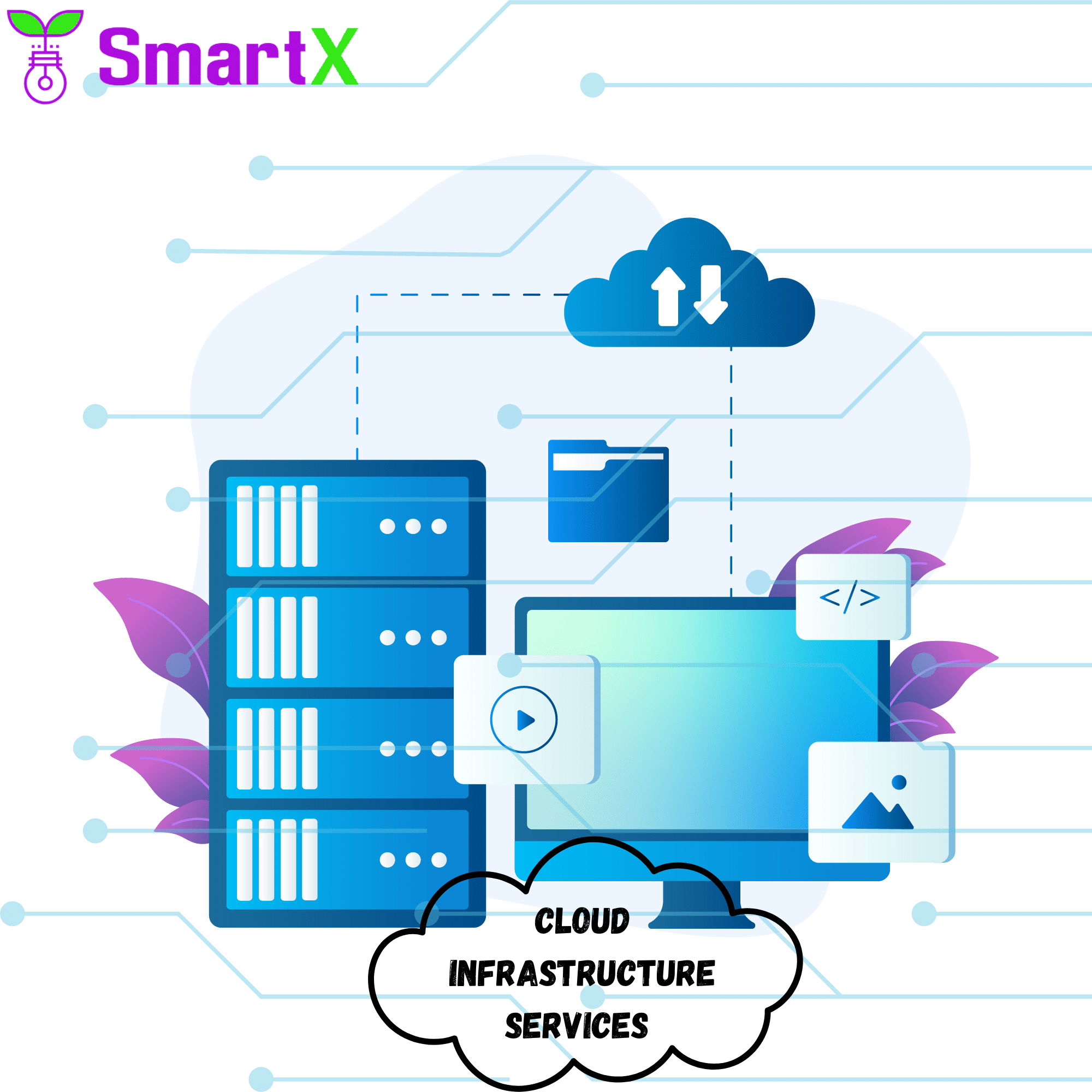An Overview of DevOps Services: A great Revolution in Software Development - 2023
Are you tired of the constant struggle between developers and IT departments? Are your software development projects plagued by long wait times, misunderstandings, and last-minute failures? Enter DevOps – a revolutionary approach to software development that promises faster build times, better collaboration, and higher-quality code. In this article, we’ll explore the basics of DevOps services and how they can transform your organization’s software development process. From agile project management to automated testing and continuous deployment, get ready to discover the power of DevOps.

Introduction to DevOps Services
DevOps is a term that refers to a set of practices that helps automate processes between software development and IT operations. It combines the words “development” and “operations” to signify the collaboration between the two teams. One of the primary goals of DevOps is to accelerate the delivery of features and fixes by removing manual handoffs between teams.
To achieve this, several popular DevOps services are available. Configuration management is one such service that helps automate the configuration and maintenance of complex infrastructure. Puppet, Chef, and Ansible are popular configuration management tools used in DevOps.
Continuous Integration (CI) is another popular DevOps service that involves putting code changes through an automated build process to detect errors as early as possible. Continuous Delivery (CD) takes it a step further by automatically deploying code changes to production servers. This enables developers to make more frequent releases and receive faster feedback. Jenkins, Travis CI, and Circle CI are popular CI/CD automation tools in DevOps.
Containerization platforms like Docker are also used in DevOps to package code with all its dependencies into a “container.” This makes deploying applications in any environment easy without worrying about dependency issues.
Finally, monitoring and logging services play a crucial role in DevOps. They help teams keep track of system performance and identify issues quickly. New Relic, DataDog, and Loggly are widespread monitoring and logging tools used in DevOps.
Advantages of Using a DevOps Service
DevOps services offer many advantages to software development teams seeking to improve their processes and deliver better applications. One of the most significant benefits of using a DevOps service is accelerating the software development process through automation. By automating repetitive tasks and workflows, DevOps services can help teams to reduce manual effort, minimize errors, and increase productivity.
Another crucial benefit of DevOps services is improved collaboration between developers and operations teams. DevOps aims to break down traditional silos between teams and foster a culture of collaboration and cooperation. This can lead to better communication and transparency throughout the software development process, leading to a better understanding of the requirements, faster feedback loops, and quicker resolution of issues.
DevOps services also contribute to improving the quality of software applications by providing automated testing and monitoring tools. This allows teams to test and identify defects in the software earlier in the development cycle, leading to higher-quality code and fewer bugs in production. Additionally, monitoring tools can help teams to identify and fix issues quickly, reducing the time required for debugging and maintaining the application.
Finally, DevOps services can help to reduce the overall cost of developing and maintaining software applications. By automating repetitive tasks and reducing errors, teams can lower the costs associated with manual effort and remediation. Additionally, better collaboration and communication can lead to more efficient use of resources and a more streamlined development process.
What Types of Technologies are Used?
DevOps services rely on several technologies that help development and operations teams manage the application development lifecycle more effectively. These technologies automate critical processes, streamline workflows, and improve collaboration between teams, resulting in faster time-to-market, improved quality, and reduced costs.
One of the most important technologies used in DevOps services is automation. Automation tools help teams to automate repetitive, manual tasks, such as testing, deployment, and configuration management. This not only reduces the time and effort required for these tasks but also minimizes the risk of errors and inconsistencies.
Another critical technology in DevOps services is a continuous integration and continuous delivery (CI/CD). CI/CD enables teams to automate the process of building, testing, and deploying code changes, resulting in faster feedback loops and shorter development cycles. By continuously integrating code changes and delivering them to production, teams can deliver new features and updates to customers quickly and efficiently.
Containerization technologies, such as Docker and Kubernetes, are also essential in DevOps services. Containerization allows teams to package applications and their dependencies into portable, lightweight containers that can be deployed and run anywhere. This enables teams to deploy applications consistently across multiple environments, reducing the risk of compatibility issues.
Finally, collaboration tools such as chatbots, wikis, and project management platforms, are crucial in DevOps services. These tools enable teams to communicate and collaborate effectively, share knowledge, and track project progress in real-time.
Some of the most popular technologies used in DevOps services include:
Configuration Management Tools: These tools help Development and Operations teams manage configurations, changes, and dependencies across environments. Popular configuration management tools include Puppet, Chef, and Ansible.
Continuous Integration (CI) Tools: CI tools help Development teams automate the process of building and testing code changes. This helps reduce the risk of errors and ensures that code changes are properly deployed to production systems. Popular CI tools include Jenkins, Bamboo, and TeamCity.
Continuous Delivery (CD) Tools: CD tools help Development teams automate the process of delivering code changes to production systems. This helps ensure that code changes are properly deployed and that systems are not impacted by unplanned downtime. Popular CD tools include GoCD, Spinnaker, and Travis CI.
Practices that Support Continuous Delivery
Continuous delivery is a software development practice that allows teams to make code changes and see the results of those changes in real time, allowing for quick feedback and reduced risk of errors. This approach involves several key practices that work together to support the continuous delivery process.
The first practice is automated testing. This ensures that code changes are automatically tested for correctness and quality before they are deployed to production, reducing the risk of errors and issues. Automated testing helps to catch issues early in the development process, allowing teams to address them before they become bigger problems.
The second practice is continuous integration, which involves continuously integrating code changes into a shared codebase. This enables developers to identify and fix issues quickly, reducing the risk of conflicts and ensuring that code changes are properly tested before deployment.
Deployment scripting is another critical practice in continuous delivery. Automated scripts ensure that deployments are repeatable and consistent, reducing the risk of errors and ensuring that deployments can be rolled back if necessary.
Change management is also important in continuous delivery. A formal process helps to ensure that all code changes are properly tracked and approved before they are deployed to production, reducing the risk of errors and ensuring that changes are made in a controlled and consistent manner.
By following these practices, software development teams can significantly improve their efficiency and quality while reducing the risk of errors. Continuous delivery enables teams to deploy changes quickly and with confidence, ultimately resulting in faster time-to-market, improved customer satisfaction, and reduced costs.
Automation and Orchestration Strategies
In the context of software development, automation, and orchestration strategies refer to the use of tools and processes to manage code development, builds, testing, and deployments. DevOps services can help to streamline and automate these activities, providing a more efficient way to manage the software development lifecycle.
There are many different automation and orchestration strategies that can be employed in a DevOps environment. Some common strategies include continuous integration (CI), continuous delivery (CD), and Infrastructure as Code (IaC).
CI is a process whereby code changes are automatically built and tested on a regular basis. This helps to ensure that changes do not break existing functionality and that new features are properly integrated into the codebase.
The CD is a strategy whereby code changes are automatically deployed to production systems on a regular basis. This allows for faster feedback cycles and quicker iteration times. IaC is a methodology whereby infrastructure is managed using code instead of manual configuration. This allows for greater consistency and predictability in infrastructure management, as well as the ability to track changes over time.
Automation and orchestration strategies can help to improve the efficiency of the software development process by reducing manual tasks, eliminating errors, and speeding up feedback loops. They can also help to improve collaboration between developers, testers, and operations staff by providing a shared platform for information exchange and workflows.
Security in DevOps Services
In the past, software development was often an isolated and siloed process, with limited communication and collaboration between teams. This approach often led to inefficiencies and wasted time, as well as a slower pace of development. But with the advent of DevOps services, developers can now work together more effectively, sharing ideas and code changes quickly and easily.
However, as the pace of development increases, so does the risk of errors and security vulnerabilities. With more people working on code simultaneously, it’s crucial to have robust security measures in place to catch errors early and prevent them from causing major problems down the line.
DevOps services provide a range of security tools and practices to help teams manage these risks. For example, automated testing can catch security vulnerabilities early in the development process, while continuous integration helps to ensure that code changes are properly integrated and tested before deployment.
In addition, many DevOps services offer built-in security features such as vulnerability scanning and access control, as well as monitoring and logging tools to help teams detect and respond to security incidents quickly.
By prioritizing security as a key part of their DevOps strategy, teams can help to ensure that their software development projects run smoothly and securely, delivering high-quality software to their customers and users.
How is Quality Measured in DevOps?
There are a number of ways to measure quality in DevOps. One common metric is the mean time to recovery (MTTR), which measures how long it takes for a system to recover from an outage or incident. Other metrics include mean time to failure (MTTF) and error rate.
Another common metric is lead time, which measures the time it takes from when a change is made to when it is deployed in production. This metric is important because it captures the end-to-end process from development through to delivery. shorter lead times typically result in faster feedback and therefore more rapid improvements.
Finally, another key metric is the change fail rate, which measures the percentage of changes that fail when they are deployed into production. A high change failure rate indicates that there are problems with the way changes are being implemented and/or tested, and this can lead to instability and outages.
Challenges and Benefits of Implementing DevOps Services
While there are certainly challenges to implementing DevOps services, the benefits can be significant. One key advantage of DevOps is that it enables teams to work together more efficiently, which can lead to faster development times and improved quality. This is because DevOps encourages communication and collaboration between teams, as well as the use of automated processes and tools.
In addition to improving efficiency and quality, DevOps can also help organizations to reduce costs. By streamlining processes and automating tasks, DevOps can help to eliminate inefficiencies and reduce the time and effort required to develop and deploy software. This can lead to significant cost savings over time.
Another benefit of DevOps is that it can improve the overall customer experience. By delivering software updates and features more quickly and reliably, organizations can better meet the needs and expectations of their customers. This can help to build trust and loyalty and ultimately lead to increased revenue and growth.
Overall, while implementing DevOps services can be challenging, the benefits can be well worth the effort. By investing in the right tools, processes, and people, organizations can transform their software development process and achieve significant improvements in efficiency, quality, and customer satisfaction.
Conclusion
DevOps services are revolutionizing software development, with enhanced automation and streamlined processes that allow teams to efficiently deliver high-quality products in less time. It is essential for any organization looking to keep up with the constantly evolving technology landscape to consider implementing a reliable DevOps strategy. By understanding what it takes to get started and how such strategies work, businesses can benefit from reduced delivery times while cutting costs associated with manual IT operations. With this in mind, getting familiarized with DevOps services must be at the top of your list when planning future projects.
We appreciate your interest in understanding how DevOps services are transforming software development. For insights into embracing DevOps strategies in agile development, read our post: The Future of Agile Development: Embracing DevOps Strategies – 2023















